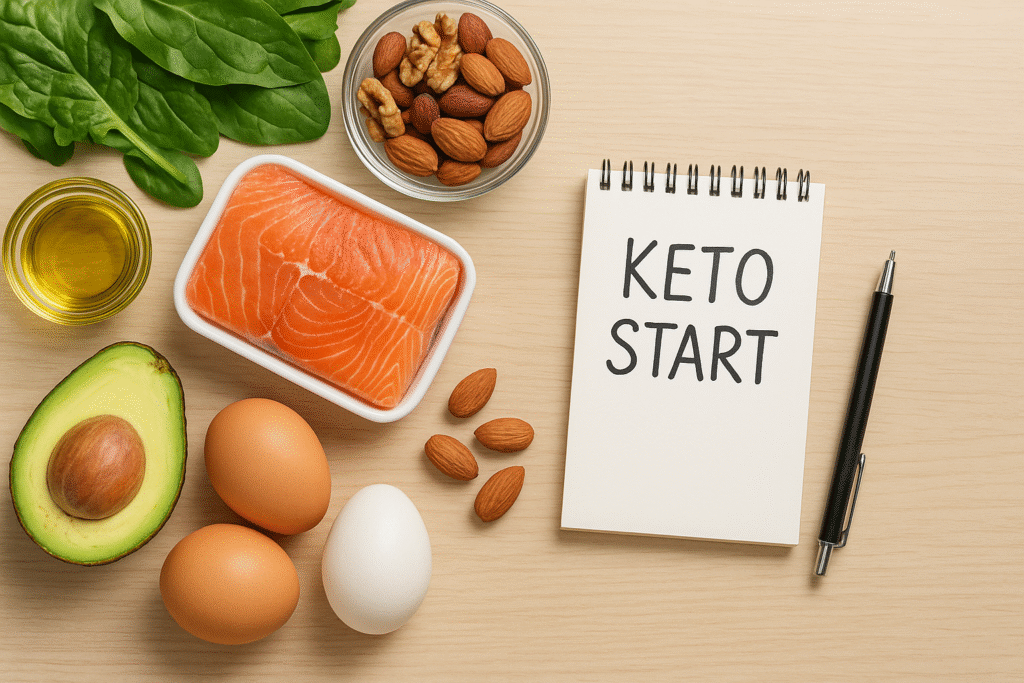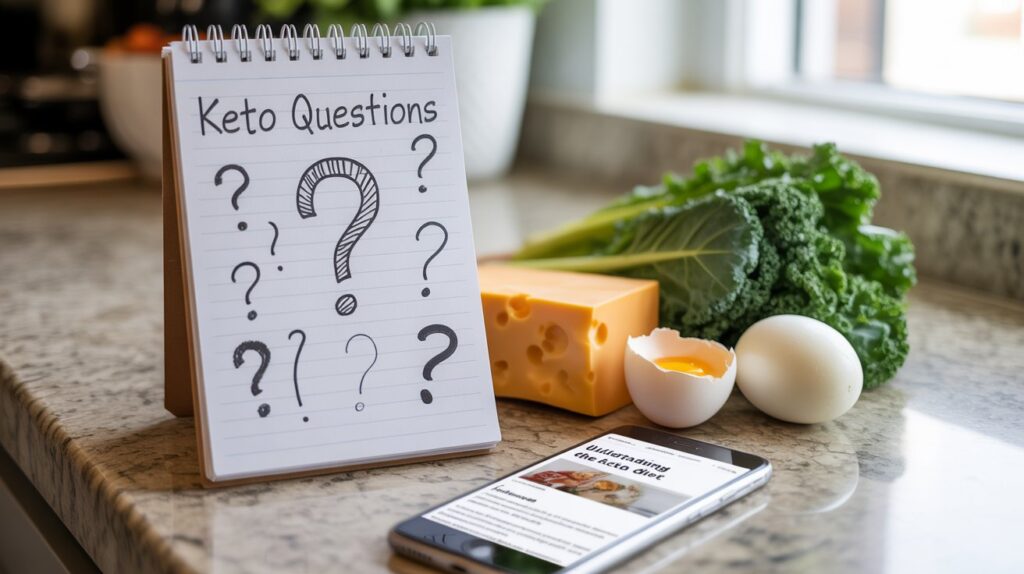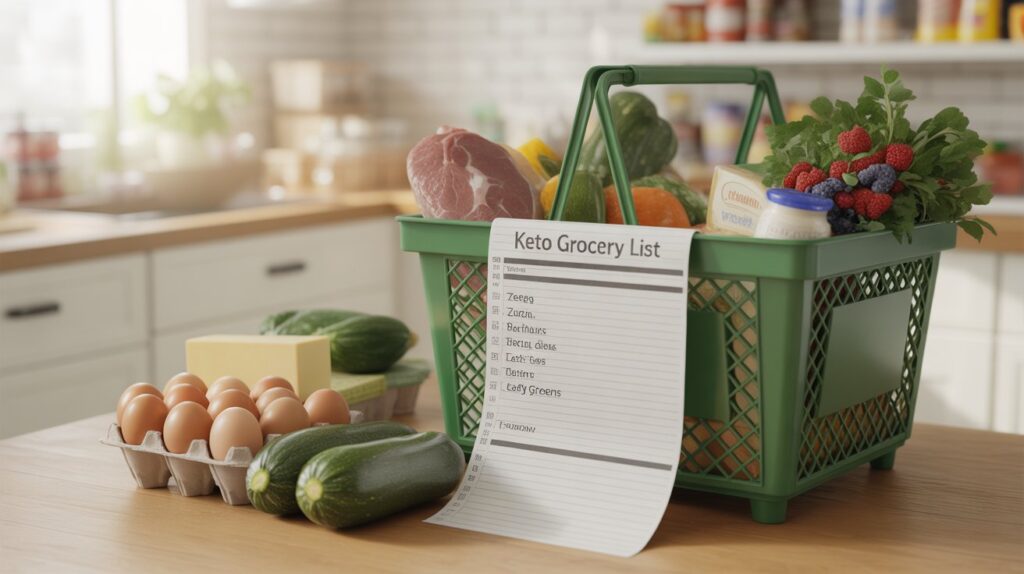
Let’s Sit Down for a Minute
If you’re reading this, you’re probably thinking about starting the keto diet — maybe for weight loss, maybe to feel better, maybe because someone you trust said it helped them. Either way, I want to start by saying something most people forget to tell you:
You’re allowed to be unsure, tired, overwhelmed, and still take the first step.
This guide isn’t here to impress you with big words or make keto sound like a magic trick. It’s just me, sitting with you, walking you through exactly what you need to know — so that when you do decide to start, it doesn’t feel like jumping into the deep end without knowing how to swim.
What Even Is Keto? (No Jargon, Just Real Talk)
The keto (short for ketogenic) diet is a way of eating where you shift your body’s fuel source. Instead of running on carbs and sugar, you teach your body to run on fat.
That sounds intense, but here’s the breakdown:
-
Normally, your body burns glucose (from carbs) for energy.
-
On keto, you cut carbs very low — usually below 20–50g net carbs/day.
-
When glucose isn’t available, your body starts breaking down fat into ketones.
-
These ketones fuel your brain and body. This state is called ketosis.
So, in the simplest words: you stop feeding your body sugar, and it learns to burn fat instead.
What Are the Real Benefits? (And Why People Love Keto)
Let’s clear something up — keto isn’t for everyone. But for many people, it brings some powerful shifts:
✅ Fat Loss (Especially Belly Fat)
Keto helps reduce insulin (your fat-storing hormone), which means your body can finally access stored fat and use it for energy.
✅ Reduced Cravings and Hunger
Once you’re in ketosis, your blood sugar stabilizes. No more wild hunger spikes or energy crashes.
✅ Mental Clarity
Many people on keto describe it as a “calm focus” — no brain fog, no afternoon slump.
✅ Better Blood Sugar Control
Keto can be life-changing for people with insulin resistance or pre-diabetes.
✅ Less Bloating, Clearer Skin, More Energy
When you cut processed carbs and sugar, your body thanks you in more ways than one.
But Is It Safe? Is It Hard?
These are real questions — and smart ones. You’re not being dramatic or negative for asking.
🔸 Is keto safe?
For most healthy people, yes. If you have diabetes, kidney issues, or are on medication, check with your doctor. Always.
🔸 Is it hard?
The truth? The first week is the hardest. Your body goes through withdrawals — sugar, carbs, old habits. But after that, it gets better. A lot better.
And no, you don’t have to be perfect. You just have to be consistent.
What You’ll Actually Eat on Keto
This part isn’t about some Pinterest-perfect plate. It’s about real food you can make, buy, and enjoy without stress.
✅ Foods You’ll Focus On:
-
Healthy fats: olive oil, butter, ghee, avocado, coconut oil
-
Protein: eggs, chicken, beef, fish, lamb
-
Low-carb veggies: spinach, kale, zucchini, cabbage, broccoli, cauliflower
-
Nuts & seeds (in moderation): almonds, chia, flax, walnuts
-
Cheese & full-fat dairy (if tolerated)
-
Herbs, spices, lemon juice, vinegar
🚫 Foods You’ll Avoid:
-
Sugar (even “natural” ones like honey or dates)
-
Bread, rice, pasta, flour, corn
-
Most fruits (berries are okay in small amounts)
-
Beans, lentils
-
Processed snacks and low-fat anything
The idea is to nourish your body with real food, not punish it with restriction.
How to Know If You’re in Ketosis
You don’t need to pee on a stick or buy a fancy meter (unless you want to).
Most people know they’re in ketosis when:
-
Hunger goes way down
-
You feel clearer mentally
-
You stop craving sugar
-
You have more energy (after the first week)
That first week, though? You might experience…
The “Keto Flu” (And How to Handle It Like a Grown-Up)
Yep. It’s real. Around Day 2–5, you might feel:
-
Tired
-
Headachy
-
Grumpy
-
Foggy
-
Craving everything
It’s not forever — it’s your body adjusting to burning fat. Here’s how to feel better:
💧 Stay Hydrated
Drink more water than usual. Add salt (yes, actual salt) to your meals.
🧂 Add Electrolytes
You’re losing sodium, potassium, and magnesium — try an electrolyte supplement or sip on broth.
🛌 Rest and Be Kind to Yourself
Don’t start keto during a stressful week. Ease into it if needed. This isn’t a test.
Macros? Calories? What Should I Track?
Don’t panic. You don’t need to be a scientist to do keto.
Here’s a basic macro breakdown:
-
Fat: 70–75%
-
Protein: 20–25%
-
Carbs: 5–10%
If you want numbers: aim for 20–30g net carbs per day (net carbs = total carbs minus fiber).
You can use a free app like Carb Manager or MyFitnessPal, but if tracking feels overwhelming — just focus on eating real food and keeping carbs low. That alone will take you far.
Biggest Mistakes Beginners Make (So You Don’t Have To)
Let’s talk about what trips people up — not to scare you, but to help you walk around the potholes.
❌ Thinking It Has to Be Perfect
You don’t have to track every gram or cook gourmet meals. You can do keto with scrambled eggs, grilled chicken, and frozen veggies. Really.
❌ Not Eating Enough Fat
Fat is your new fuel. If you’re tired or hungry all the time, you might not be eating enough of it.
❌ Fear of Salt
Keto needs more salt than most diets. Sprinkle generously (unless told otherwise by a doctor).
❌ Giving Up Too Early
Your body needs time to adapt. Don’t quit on Day 3. Give it at least 2 weeks.
Can You Do This Long-Term?
Keto isn’t just a 30-day detox — many people live this way for years. But you don’t have to decide that now.
You can start with 4 weeks. See how you feel. Then decide what works for you long term — strict keto, low carb, cyclical keto — there’s no one way to live.
This isn’t about rules. It’s about how you feel in your own body.
How to Start (Step-by-Step)
Here’s what I’d tell you if we were sitting on your couch right now:
1. Clean Out the Carbs
Take a look at your kitchen. If it tempts you, and it’s not keto-friendly, try to set it aside (or donate if unopened).
2. Make a Simple Grocery List
Start with 3 proteins, 3 veggies, 2 fats. Don’t overcomplicate.
3. Pick Easy Meals You’ll Actually Eat
Eggs. Chicken with veggies. Beef stir-fry. Cheese omelet. Start simple. Fancy can come later.
4. Plan for Week 1
Know that your body will feel weird — tired, hungry, maybe moody. This is okay. You’re not failing. You’re transitioning.
5. Drink Water and Add Salt
Your body needs it. Don’t skip this.
6. Write Down Why You’re Doing This
And keep it where you can see it — fridge, mirror, phone lock screen. You’ll need it when the cravings come.
You’re Not Doing This Alone
Whether this is your first attempt or your tenth — it matters that you’re trying. You don’t have to do keto perfectly to see change. You just have to be willing to begin again, every day.
This way of eating is powerful. Not just because it changes your body, but because it changes how you feel in your body. And that matters more than the number on the scale.
Next Step: Want a Full Meal Plan to Make It Easier?
If you’re ready to try keto but want a no-stress way to follow it, I’ve created a 28-Day Lazy Girl Keto Meal Plan that includes:
-
4 weeks of simple, real-food meals
-
Grocery lists
-
Prep tips
-
No fluff, no stress — just results
👉 [Grab your meal plan here – only $6] (insert link)
Keto Diet FAQs: 20 Questions Everyone Asks (and Honest Answers)
Starting keto is like walking into a new country where everyone speaks a different language—net…
Surviving Your First Week on Keto: Tips, Side Effects & What to Expect
Week 1 of keto can feel like a tiny storm in your body. But it…
Keto Macros Made Easy: How Much Fat, Protein & Carbs You Really Need
Let’s Take the Pressure Off First If you’re feeling overwhelmed with percentages, numbers, or calorie…
The Ultimate Keto Grocery List: What to Buy and What to Avoid
Let’s Make This Grocery Run Feel Less Overwhelming If you’re standing in the middle of…



